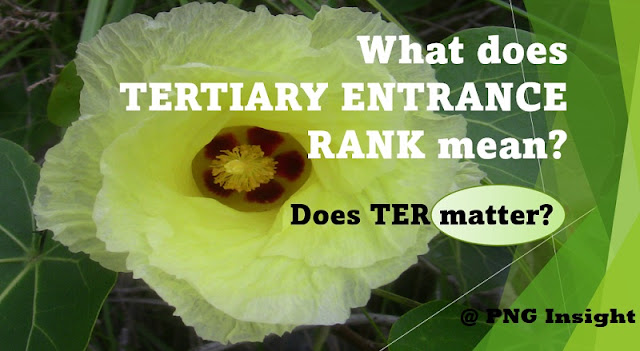The University of Goroka's School of Science and Technology offers various programs for school leavers, non-school leavers, and diploma/certificate holders who want to further their education in agriculture, biology, chemistry, computer science, environmental studies, mathematics, midwifery, and education.
1. Bachelor of Science – 8 Semesters
The Bachelor of Science program is an undergraduate degree that provides students with a strong foundation in scientific principles and critical thinking.
The program offers various specialisations such as:
- Agriculture Extension,
- Biology,
- Chemistry,
- Computer Science,
- Environmental Studies,
- Mathematics, and
- Physics.
Applicants must have:
- a B grade or better in Language and Literature, or an A grade in Applied English,
- a B grade in General Mathematics, or C grade in Advance Mathematics,
- B grade or better in respective or related subject specialisation, and
- must sit and pass the STAT P/entry test.
2. Bachelor of Agriculture (In-service) – 4 Semesters
The Bachelor of Agriculture (In-service) program is designed for students who have a diploma in agriculture and have more than three years of work experience in the area of agriculture extension.
Applicants must provide satisfactory inspector's or supervisor's reports (Inspection report must be within the last five years from the date of application) and any other qualification and experience deemed appropriate by the Admissions Committee.
3. Bachelor of Mathematics (In-service - Secondary) – 4 Semesters
The Bachelor of Mathematics (In-service - Secondary) program is designed for students who have a diploma in teaching secondary, professional registration as a teacher, and more than two years of teaching experience.
Applicants must provide satisfactory reports from the Regional Standard Officer of the applicant's performance (The report must be within the last five years from the date of application) and any other qualification and experience deemed appropriate by the Admissions Committee.
4. Bachelor in Midwifery – In-service – 3 Semesters
The Bachelor in Midwifery (In-service) program is designed for students who have:
- a diploma in nursing,
- professional registration as a nurse with the PNG Nursing Council, and
- more than three years of work experience in the area of maternal health services of the government, church, and NGOs.
Applicants must provide satisfactory inspector's or supervisor's reports (Inspection report must be within the last five years from the date of application) and any other qualification and experience deemed appropriate by the Admissions Committee.
5. Diploma in PVTE Health – 2 Semesters
The Diploma in PVTE Health program offers specialisations in Health Education and Health Teaching.
To be eligible for this program, applicants must have:
- a Certificate or Diploma in Nursing in any health professional speciality from accredited institutions recognised by NDOH,
- professional registration as a nurse with the PNG Nursing Council,
- more than three years of work experience in the area of Health Education or Health Teaching with health services of the government, church, and NGOs, and
- satisfactory inspector's or supervisor's reports (Inspection report must be within the last five years from the date of application).
6. Diploma in PVTE Agriculture (In-service) - 2 Semesters
The Diploma in PVTE Agriculture program is designed for students who have:
- a Diploma in Tropical Agriculture or PCD Agriculture with a minimum GPA of 2.4,
- more than three years of work experience in the area of Agriculture or Agriculture Extension, and
- provide satisfactory inspector's or supervisor's reports (Inspection report must be within the last five years from the date of application) and
- any other qualification and experience deemed appropriate by the Admissions Committee.
7. Diploma in Science (Primary – In-service) – 4 Semesters
Entry Requirements
- Diploma/Certificate in Teaching Primary.
- Professional registration as a teacher.
- More than two years of teaching experience.
- Satisfactory Report from the Regional Standard Officer of Applicant’s performance (Report must be within the last five years from the date of application).
- Any other qualification and experience deemed appropriate by the Admissions Committee.
University of Goroka's School of Science and Technology
The University of Goroka's School of Science and Technology offers several degree and diploma programs designed to equip students with the knowledge and skills required to succeed in their chosen fields.
If you are considering applying for a program in this school, it is important to meet the entry requirements listed for each program.
FAQs:
1. What is the minimum GPA required to apply for a Bachelor of Science program?
A: The minimum GPA required is 2.8 on the HSC from recognised institutions.
2. What grades are required in Language and Literature or Applied English?
A: A B grade or better in Language and Literature, or an A grade in Applied English.
3. What is the required grade in General Mathematics or Advance Mathematics?
A: B grade in General Mathematics or C grade in Advance Mathematics.
4. What is the STAT P/entry test, and is it required for all Bachelor of Science programs?
A: The STAT P/entry test is an aptitude test that assesses your critical thinking, reasoning, and problem-solving abilities. It is required for all Bachelor of Science programs.
5. Can I apply for a Bachelor of Agriculture program if I do not have a Diploma in Agriculture?
A: No, a Diploma in Agriculture is a required qualification for the Bachelor of Agriculture program.
6. What is the minimum work experience required for the Bachelor of Mathematics (In-service - Secondary) program?
A: More than two years of teaching experience is required.
7. Are there any other qualifications or experiences that may be considered for admission into a program at the School of Science and Technology?
A: Yes, any other qualification or experience that is deemed appropriate by the Admissions Committee may be considered.
Other programs and additional information
Course details (Click on the links to find out more):
1) UOG Institute of Distance and Flexible Learning (IDFL)
2) University of Goroka ITVET Teacher Training
3) SCHOOL OF HUMANITIES Programs and Entry Requirements
4) SCHOOL OF SCIENCE AND TECHNOLOGY Entry Requirements
5) SCHOOL OF EDUCATION Undergraduate Programs Entry Requirements
6) Post-Graduate Opportunities at University of Goroka - UOG | Doctor | Masters | Honours | PGDE












